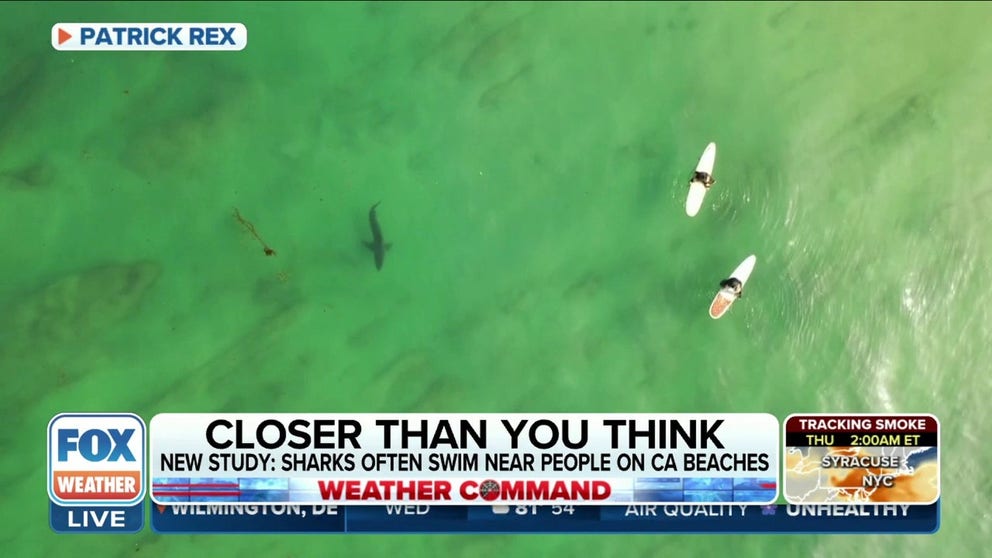Drone video shows first-ever view of live newborn great white shark
A filmmaker and researcher captured drone video of what they believe is the first-ever image of a live newborn great white shark. Despite a worldwide fascination about the carnivores, very little is known about the species.
FILE: New study shows swimmers are having close encounters with sharks along California coast
California State University Long Beach Shark Lab director Dr. Chris Lowe joined FOX Weather on Wednesday to discuss a new study that shows great white sharks are swimming closer to swimmers without them realizing what is lurking beneath the surface of the water.
For the first time ever, humans get a peek at a live newborn great white shark, possibly solving an age-old mystery, claims research from the University of California, Riverside.
"Where white sharks give birth is one of the holy grails of shark science. No one has ever been able to pinpoint where they are born, nor has anyone seen a newborn baby shark alive," wildlife filmmaker Carlos Gauna said in a statement. "There have been dead white sharks found inside deceased pregnant mothers. But nothing like this."
Never-before-seen great white shark pup
The filmmaker and a biology doctoral student spotted an unusual shark while filming off the coast of Santa Barbara, California in July 2023. The shark, they identified as a great white pup, was completely white instead of gray on the top.
GREAT WHITE SHARK ENCOUNTERS INCREASING DUE TO WARMING SEA TEMPS
NEW SHARK-SAVING TECHNOLOGY AIMS TO PROTECT SPECIES' MOST VULNERABLE HABITATS
"We enlarged the images, put them in slow motion, and realized the white layer was being shed from the body as it was swimming," Phillip Sternes, University of California Riverside biology doctoral student said in the statement. "I believe it was a newborn white shark shedding its embryonic layer."
The pair identified the nearly 5-foot long shark as a great white pup by its size and rounded fins, similar to embryos previously discovered. The paper suggests that it was only hours to days old. The white substance could have been uterine milk which mother sharks produce to feed the embryos. The usual gray became evident after the layer sloughed off.
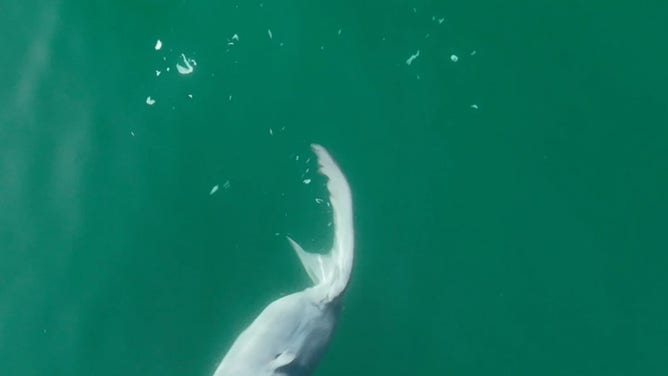
A screenshot of the video of the white layer sloughing off the shark pup. Take a look at the chunks behind the tail.
(Carlos Gauna/ The Malibu Artist)
Little is known about great white biology and behavior
Prior research suggested that large adult female sharks give birth off the coast between Santa Barbara and Baja California, Mexico in late summer and early fall. The paper called the area a "critical nursing habitat" for white sharks. That area is also where the smallest known free-living white shark was caught in 2019. It was about 3.5 feet long with similar rounded fins.
"There are a lot of hypothetical areas, but despite intense interest in these sharks, no one’s seen a birth or a newborn pup in the wild," Sternes said. "This may well be the first evidence we have of a pup in the wild, making this a definitive birthing location."
The pair, as well as other researchers, witnessed large, mature white sharks off Santa Barbara that day and for the two days prior.
GREAT WHITE SHARK ‘HOTSPOT’ OFF CAPE COD ONE OF LARGEST IN WORLD, STUDY FINDS
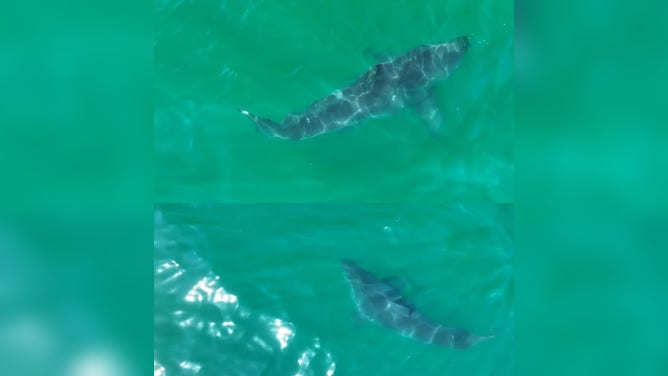
These photos are one of the large, potentially pregnant, white sharks found two days before.
(Carlos Gauna/ The Malibu Artist / FOX Weather)
"I filmed three very large sharks that appeared pregnant at this specific location in the days prior. On this day, one of them dove down, and not long afterwards, this fully white shark appears," Gauna said. "It’s not a stretch to deduce where the baby came from."
The paper said an alternative explanation would be that the shark pup had a skin disorder that had never been reported or seen before this video.
AERIAL VIDEO CAPTURES SHARK SNACK ATTACK OFF NEW YORK BEACH
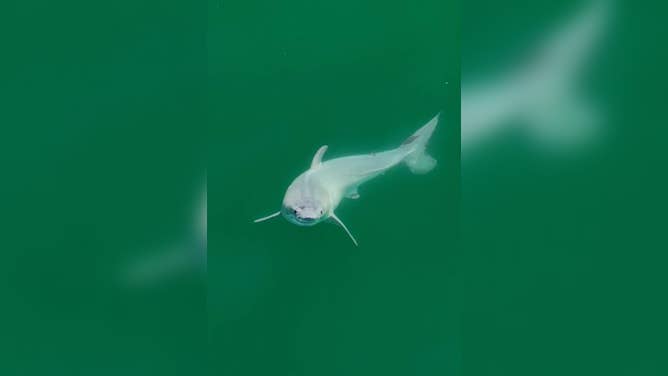
This is one of the first images ever of a live newborn great white shark.
(Carlos Gauna/The Malibu Artist / FOX Weather)
"Nevertheless, in either case, the use of the aerial drone has provided shark science with another interesting set of information," the paper reads. "Therefore, future drone observations of sharks in this area will greatly improve our knowledge and understanding of white shark life history."
Public fascinated by great whites
The great white is the world's largest predator fish. They can grow up to 4,000-7,000 pounds and 16–20 feet long, according to the World Wildlife Fund. The public has been fascinated with the species, as evidenced by the popularity of the "Jaws" films.
PHOTOGRAPHER RECREATES ‘JAWS’ POSTER WITH GREAT WHITE SHARK IN WILD
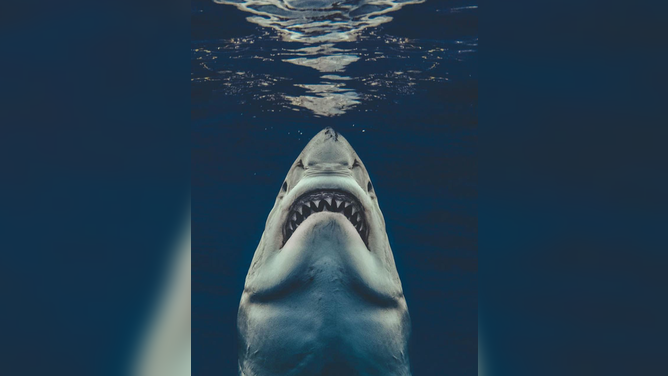
A Great White shark photographed near Guadalupe Island recreated the "Jaws" movie poster art. (Image: Euan Rannachan)
(Euan Rannachan / FOX Weather)
"As large and powerful predators, great white sharks play an important role at the top of the marine food chain," stated the WWF. Despite its fame and reputation, little is actually known about the great white shark’s biology and behavior.
Gestation for white sharks is about 12 months. After that, scientists surmise that anywhere from 2 to 17 pups are born live. The species is classified as vulnerable worldwide.
